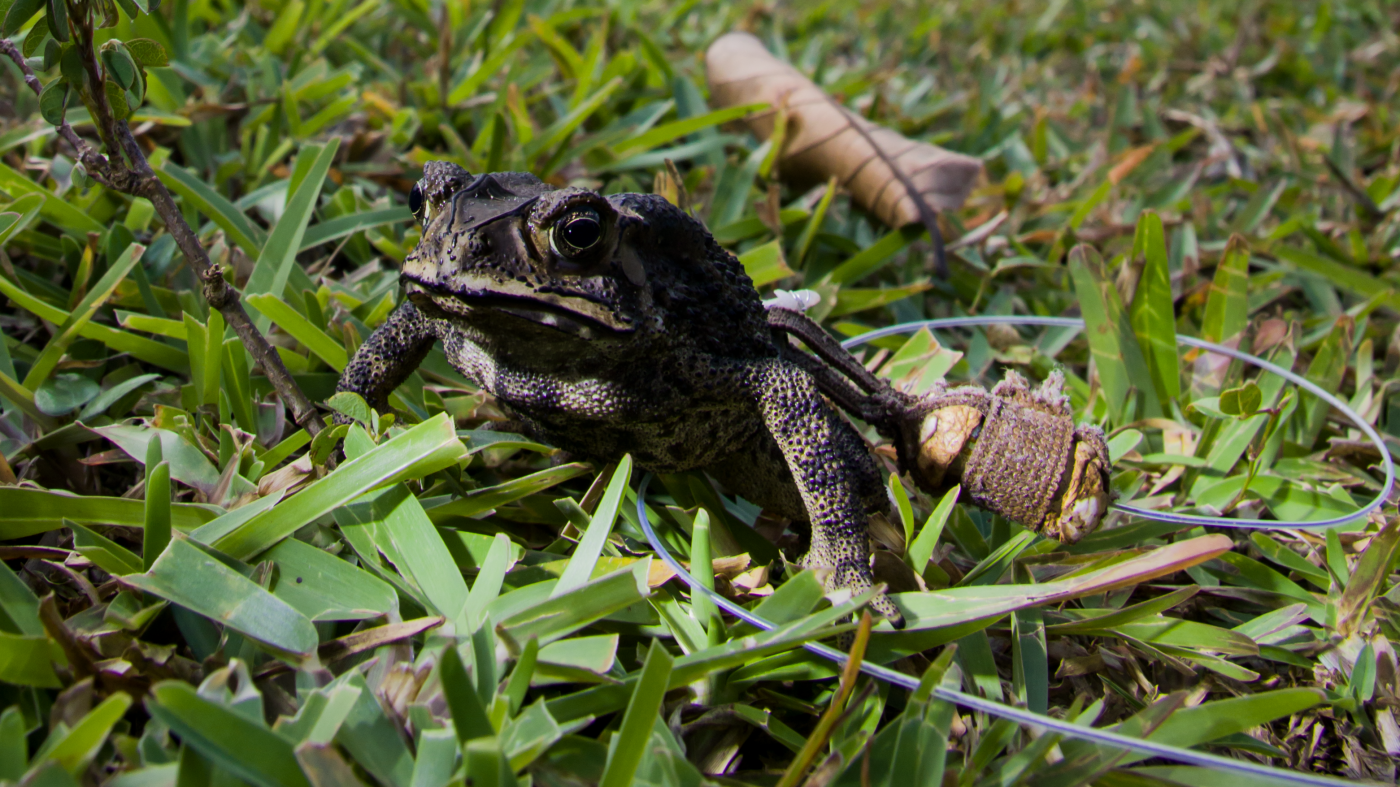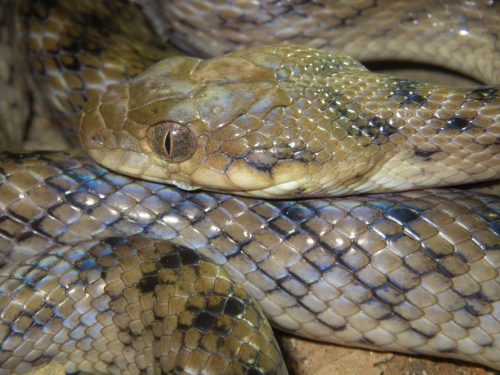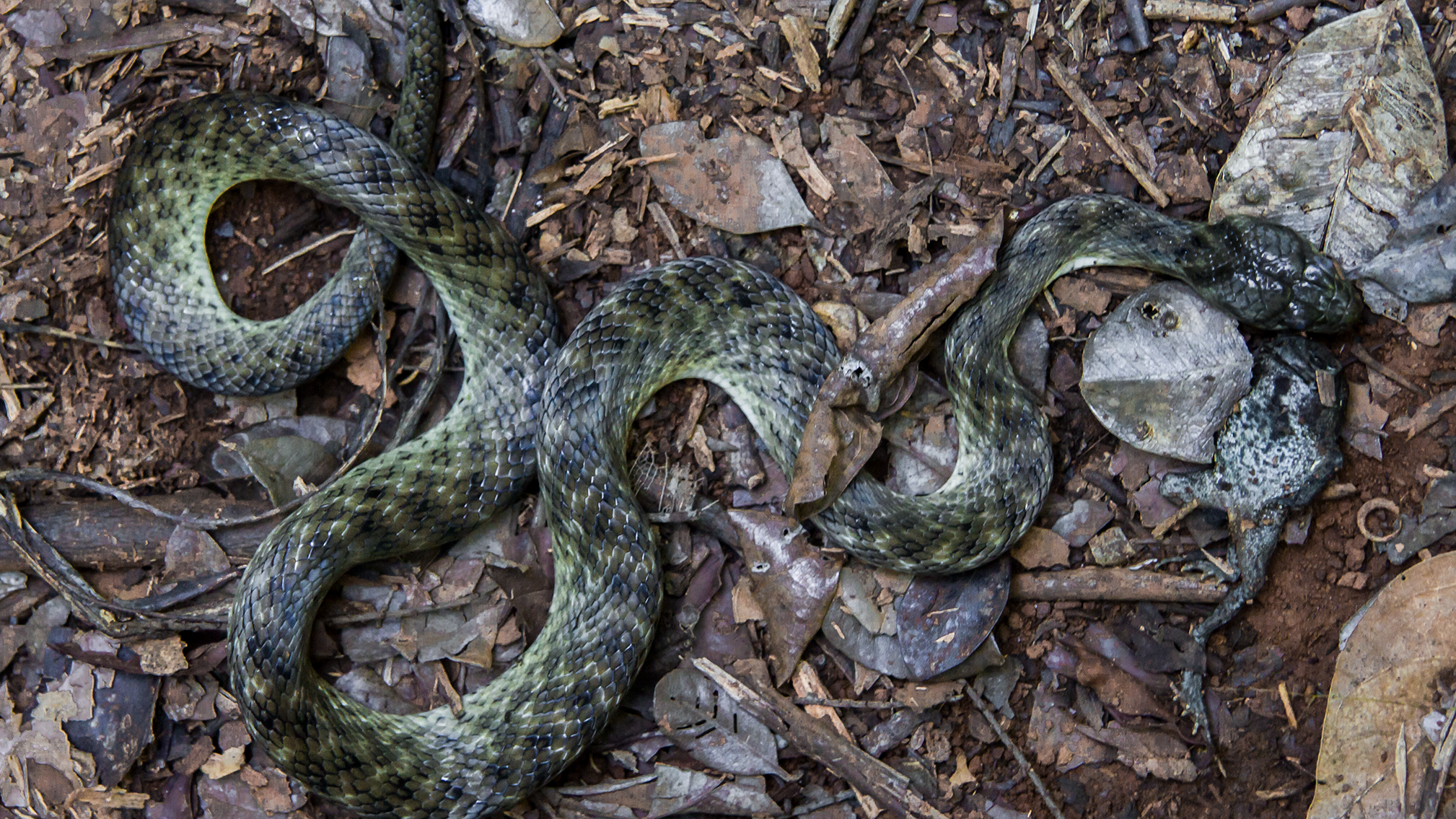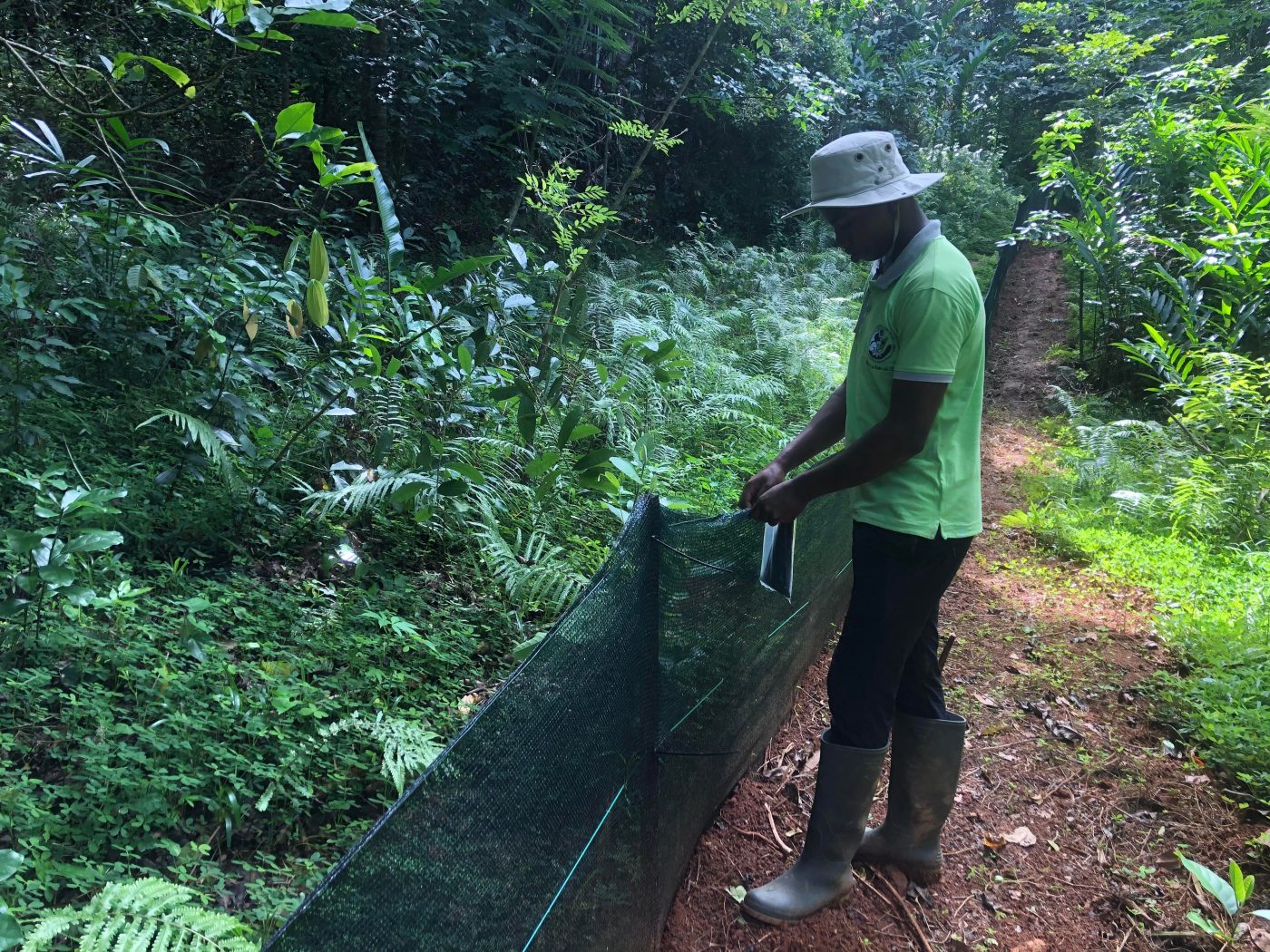For the carefully balanced forest ecosystems of Madagascar, the recent presence of the invasive Asian common toad presents a potentially grave threat.
At 8 inches long fully grown, the Asian common toad is a conspicuous sight across its huge natural range spanning much of continental South Asia, and the islands of the South East. It forms a key part of the food chain, feeding on plenty of insects and arthropods, while also being eaten by any larger animals that have evolved to resist the poison that the toad carries in its body.

An Asian toad with tracking device. Photo credit – Fulvio Licata, University of Porto
While the toad is a key part of the ecosystem in Asia, it’s proving to be more problematic in the islands it has been introduced to. Around 2010, a small population of Asian toads arrived in the eastern port city of Toamasina (French: Tamatave) on Eastern Madagascar, presumably carried as accidental stowaways on container ships. The Asian toad is suited to life in the warm, wet, human-dominated landscape of eastern Madagascar, and so they breed, fast. In these ideal conditions a female may reproduce twice in a year and produce between 8000-20000 eggs in that time.
By 2014 the spread was realised and a 2019 study suggested that the toads are expanding their range at around 2.5km a year, already covering a ~500km2 area. However, the real concern is the appearance of ‘satellite populations’ in other areas of Madagascar.
A video showing the spread of the Asian toad in the Tamatave region, including the 2021 detection of a satellite population to the north of the town.
The Asian toad’s spread is triggering alarm because countless Malagasy predators prey on the rich reptile and amphibian biodiversity found in Madagascar, but no poisonous toads have ever existed on the island. With no evolved resistance to the toad’s toxins amongst these predators, each individual Asian toad is potentially a walking last meal. The consequences of this can be seen in Australia, where the infamous spread of the poisonous cane toad has decimated Australian predator populations.


Research led by Fulvio Licata at the University of Porto, and including the team of our close Malagasy partner – the Madagascar Fauna & Flora Group (MFG), recently observed high mortality amongst cat-eyed snakes in the Analabe forest, a region where the toad had spread. On four separate occasions the team found snakes dead, with dead toads found intact in the snake’s stomach, mouth, or next to the body. The mortality rates observed here may halve the area’s cat-eyed snake population in just a single year if consistent.The collapse of predatory snake populations benefits another island invader: the rat. Rats are known to be resistant to toad toxins and carry lethal diseases such as plague. A booming rat population due to the toad’s arrival poses a severe health risk to the people of Madagascar.
The Path to a Solution
We’re excited to be able to support the Madagascar Fauna & Flora Group in a new trial project that might protect ecosystems from the toad’s spread while longer term solutions to the problem are found.
Ben Muller, MFG’s Asian Toad Control and Mitigation Programme Coordinator in Madagascar tells us more.
“The Asian toad poses a great threat to ecosystems, but so far it has spread mainly through degraded land. If we can stop the spread of the toad in pockets of Madagascar with the highest intact biodiversity, we can reduce interactions between them and the native species that are already at high risk of decline due to deforestation and climate change.
“A weakness in the toad’s armour is its need for calm, unmoving water to reproduce. This is rare in intact Malagasy forest where much of the water is fast flowing, and so theoretically all we need to do is prevent access to water where Asian toad tadpoles can survive.
“The way we’re hoping to do this is by using fencing to create exclusion zones in which the toad is kept out. We’re trialling methods in ‘Parc Ivoloina’, a wildlife refuge and centre for eco-tourism that we’ve been studying long before the toad’s 2020 arrival and since.

“A fence might sound like a simple answer to a complex issue, but the fence design we’re trialling has shown promise in other parts of the world. In Australia, toad-proof-fences made from shade-cloth have seen success in arid areas to prevent toads from accessing waterbodies, with no negative impact on native animals.
“We’ve adapted this fence so it is buried too deep for toads to burrow under, built too tall to climb over, and has holes too small to move through. The fence is short enough for most native animals including frogs and snakes to easily climb or slither over, while species used to moving through the trees such as lemurs can continue to use the canopy to move around the site.
“We are currently conducting long-term surveys at the testing site to understand if the fence can successfully exclude toads, and if it affects any other species in the process. Within a year we should have robust evidence that either our methods are reliable or we need to return to the drawing board. From there we’ll prepare a longer-term plan to protect biodiversity hotspots on Madagascar from the toad’s spread.”
MALAGASY CONSERVATION
See more on our collaborative partnerships to prevent extinction in Madagascar.